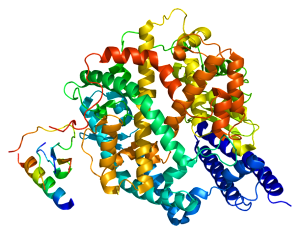The levels of carbon dioxide and other greenhouse gasses in the atmosphere have been rising at dangerous rates. As humans emit pollutants into the atmosphere, a thickening blanket is formed around the earth that traps the sun’s warmth, causing the planet to overheat. Climate change is currently the number one threat to the earth and its inhabitants, inspiring scientists all around the globe to work on new ways to help protect the planet.
Scientists have recently invented tiny micromotors that race around in the ocean, efficiently removing carbon dioxide from the water by converting it to a usable solid form. These machines, much smaller than the width of a human hair, can potentially play a role in decreasing the amounts of the greenhouse gas in the environment and combating ocean acidification.
Here’s how it works: these enzyme-functionalized micromotors rapidly zoom about the water, converting carbon dioxide into calcium carbonate. This compound is useful because it can be used in various items like calcium supplements and cement. The micromotors contain an enzyme that facilitates a reaction between carbon dioxide and water to form bicarbonate, and later calcium carbonate, reducing the amounts of carbon dioxide in the ocean. In order to fuel the micromotors in the water, researches added hydrogen peroxide, which reacts with the surface of the micromotors to generate a stream of oxygen gas bubbles that propel the micromotors around.
The micrometers move very quickly and are extremely efficient at removing carbon dioxide from water. When released in water solutions that contained as little as two to four percent hydrogen peroxide, the micromotors reached speeds of more than 100 micrometers per a second. They are able to rapidly decarbonate water solutions saturated with carbon dioxide; in an experiment, the micromotors removed 90 percent of the carbon dioxide from a solution of deionized water, and were just as effective in sea water solutions.
While the most important thing we can do to help protect the environment and animals is to live an environmentally conscious lifestyle, scientific developments like these could have a profound impact on the earth. “We’re excited about the possibility of using these micromotors to combat ocean acidification and global warming,” said Virendra V. Singh, a postdoctoral scientist in Joseph Wang’s (the lead nanoengineer of the project) research group and a co-first author of this study. We can only hope the invention lives up to its expectations and has a positive impact on global warming and ocean acidification.


